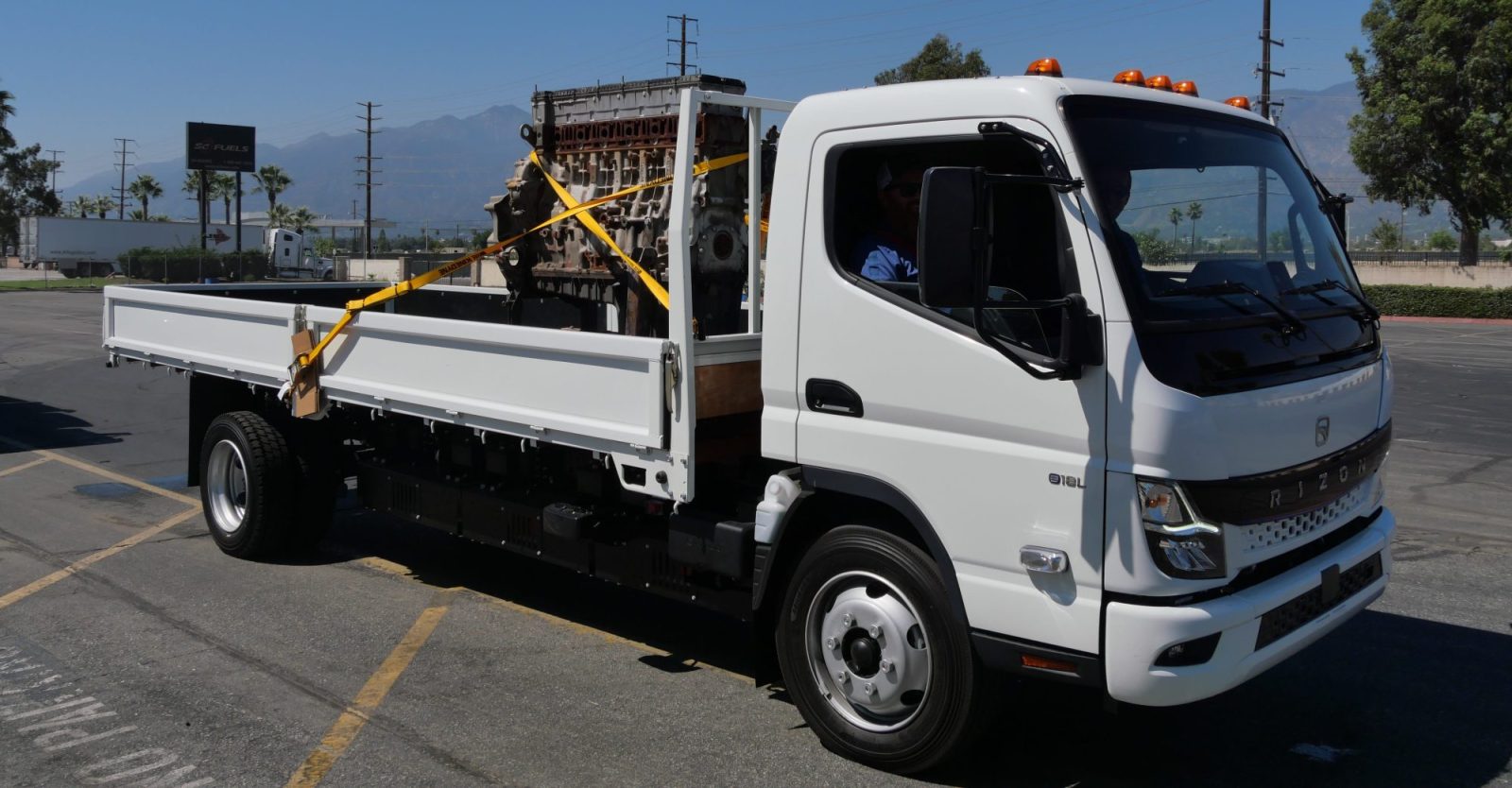
Daimler recently launched a new class 4-5 medium-duty electric truck brand, RIZON, and we got a chance to kick the tires and drive one around.
We came away impressed at how well it drives (for an 18k GVWR vehicle) and how comfortable it feels like it would be on long shifts.
Rizon is a new brand from Daimler Trucks focusing entirely on zero-emissions in the class 4-5 space. Trucks of this size don’t require commercial driver’s licenses, and you’re more likely to see them around your neighborhood, doing local delivery tasks, equipment rentals, moving businesses, and the like. So it’s nice to have clean, quiet operation instead of noisy and stinky diesel vehicles.
Daimler has been in the electric truck game for a few years now, with its Freightliner eCascadia, eM2 and other vehicles, which we’ve driven before. But Freightliner as a brand is only partially electric, whereas Rizon plans to only ever make zero-emission trucks.
So far, Rizon has four models available – two sizes, designated e16 and e18 (16k and 18k pound GVWR), with two battery configurations, designated as M and L. The “M” batteries have two 41kWh LFP battery modules, while the “L” batteries have three. The range will depend heavily on application, configuration, and load, so it’s hard to put a single number on it, but the “M” versions should be good for 70-110 miles and the “L” ones for 110-160 miles or so.
One thing to note is that the smaller “M” battery is 1,100 pounds lighter than the “L” battery, leaving more of your total 16k or 18k GVWR to be dedicated to payload, rather than dragging around extra batteries. So going with that one can be beneficial if the payload is more important than the range for vehicles with shorter fixed routes.
We got to take a short drive in the e18L version at an event hosted by Velocity Truck Centers at Irwindale Speedway, where we also drove Battle Motors’ electric garbage truck and the first-ever electric street sweeper. Events like these help fleet managers get a sense of how these EVs will work.
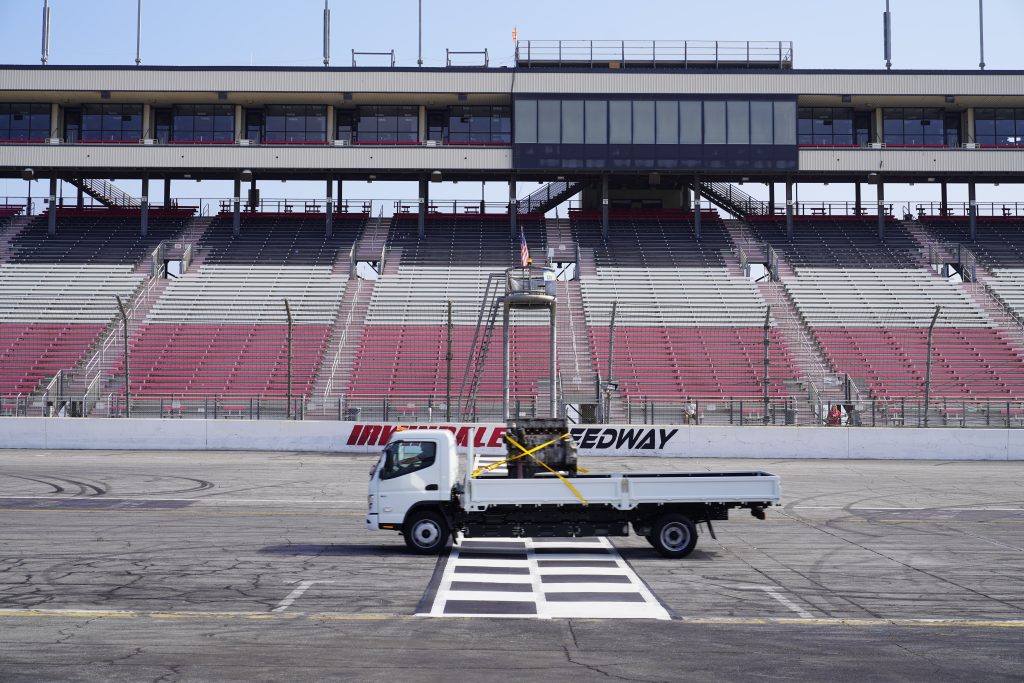
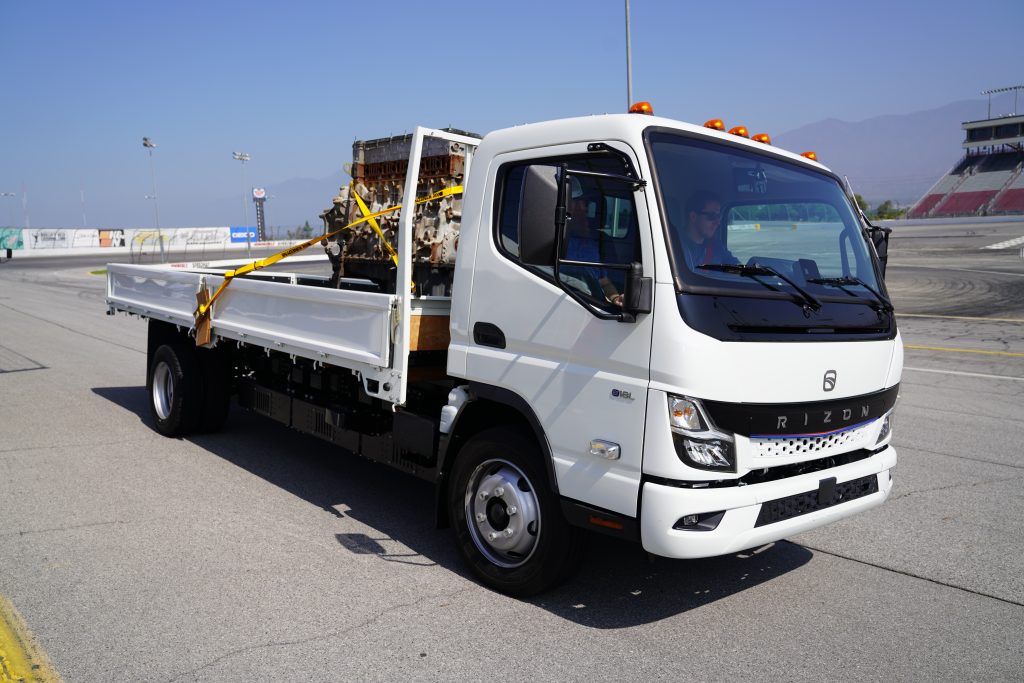
We only had a partial load though, in the form of an old 12-cylinder diesel engine strapped to the bed. So our experience wasn’t exactly what it would feel like fully loaded, but there was at least something chunky in the back.
The driving experience was smooth and nimble, nothing like what you’d expect from a truck. Even though the vehicle has a relatively low 175 peak horsepower (which is in the ballpark of other class 4-5 trucks – they typically aren’t meant to sustain high speeds), it has plenty of torque at 317lb-ft. And a flat EV torque curve means you don’t need to go gear-hunting through a clunky transmission.
Acceleration feels quicker than you’d get from a diesel truck, smoother due to the lack of gears, and quieter due to the lack of a loud diesel engine. And smooth and quiet is important – a rumbling diesel engine can add a lot of stress to the body over a long workday.
Regenerative braking is adjustable, and on the highest setting is strong enough, though we’d have liked it to be a little stronger (especially if the truck was fully laden). The turning radius was also impressive, especially on such a large vehicle.
Rizon has put a premium on driver comfort in its trucks, with features that are more often seen on consumer vehicles than commercial ones. The trucks have heated seats and steering wheels, three relatively comfortable seats with lumbar support for the driver, and keyless start. A touchscreen display covers infotainment functions.
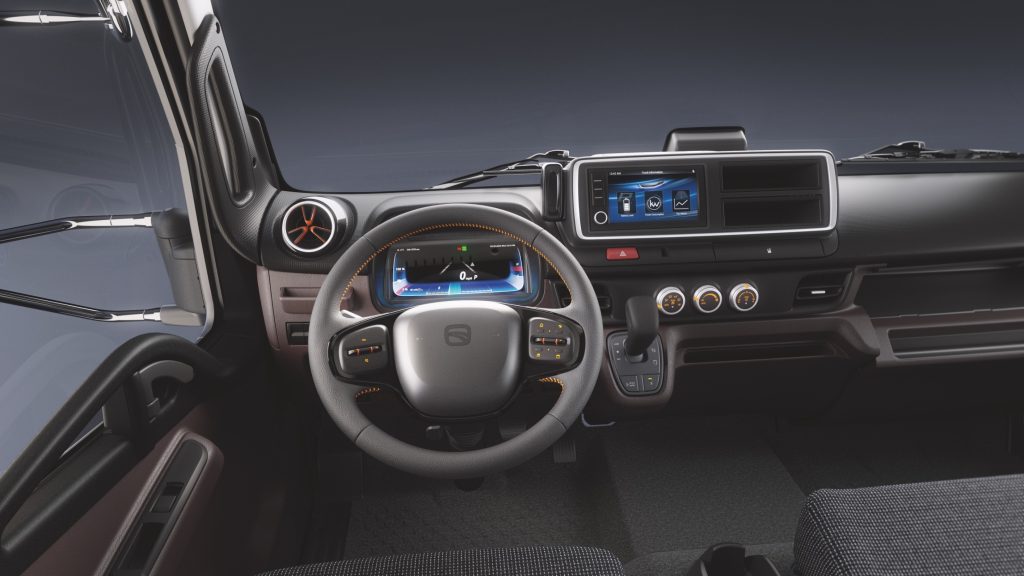
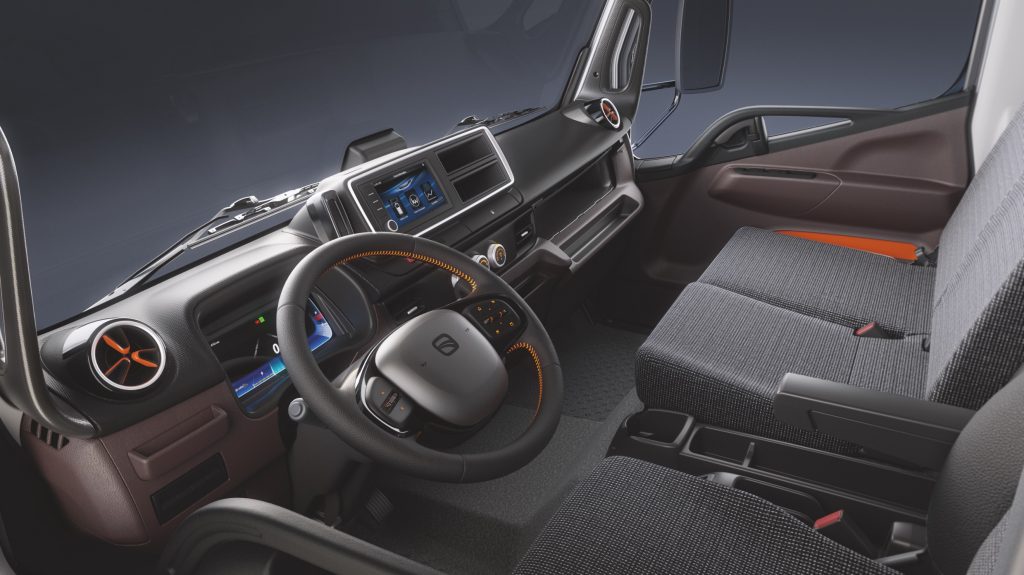
Plenty of safety features come standard, like blind spot warnings, emergency brake assist, and lane departure warnings.
Rizon uses J1772 and CCS for charging, with 19.2kW AC charging support and 104kW DC. On a class 4 or 5 truck, 19.2kW AC charging can be enough for an overnight charge for most applications.
These choices make installation easier than having to install big, expensive DC chargers and pull the high levels of amperage required to feed them (and commensurate demand charges from some utilities). Currently, lots of fleets are trying to figure out how to incorporate EVs, especially with big new truck regulations at the California state and US federal level, and charging has been in focus as a potential point of resistance.
One quirk here is that Rizon has not yet committed to NACS. We’ve seen a huge wave of support for NACS in the light-duty world, but medium- and heavy-duty vehicles haven’t been quick to hop on board the NACS bandwagon, mostly because many of them are waiting for the upcoming Megawatt Charge System (MCS), which Daimler, Tesla and many others are involved in developing.
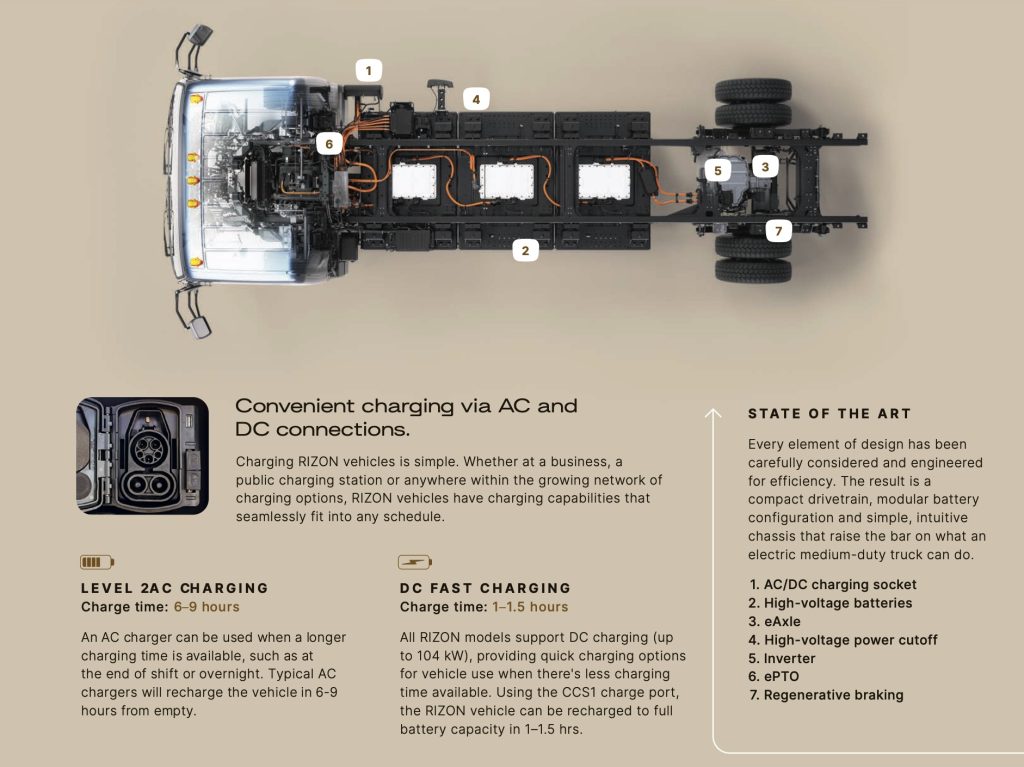
But Rizon doesn’t plan to use MCS, so they could make the switch to NACS. And it could be a helpful move for commercial customers because one nice thing about NACS over J1772 is that it supports 277V input, which is one phase of a 480V three-phase commercial power supply. This means cheaper/easier charging installation for buildings that work off 480V supply. (Our Rizon rep hadn’t heard of this potential benefit when we asked them about whether the company might switch to NACS.)
It’s not that big a deal so far, and J1772 and NACS are interoperable via adapters anyway, but we’re wondering if future Rizon trucks might make the shift to NACS.
It’s often hard to get specific prices in the medium- and heavy-duty world, but Rizon says that the trucks will “usually spec out in the $150k range.” This is more expensive than the diesel trucks they replace, but government incentives are available to get that price down by quite a bit – with up to $40,000 in incentives from the Inflation Reduction Act and additional incentives available in some states like California. And of course, you save money on fuel and maintenance over the duty period.
Overall, the Rizon truck represents a nice step forward for medium-duty commercial vehicles, with smooth and quiet operation and significant focus on driver comfort which should make this an easy sell for drivers and fleet operators.
FTC: We use income earning auto affiliate links. More.





Comments